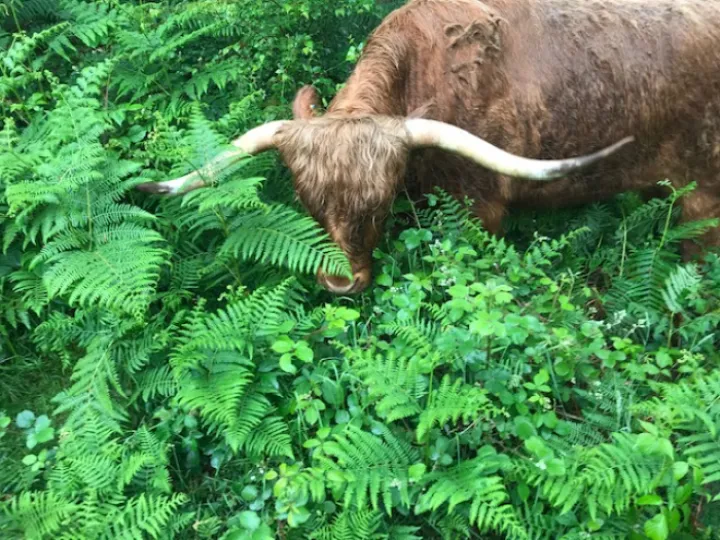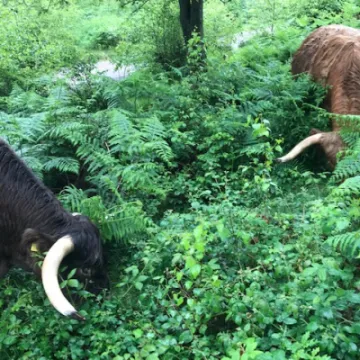Cattle on Bickerton Hill
Bickerton Hill is characterised by lowland heath, a very rare and threatened habitat that occurs on acidic, impoverished, dry sandy soils, characterised by the presence of a range of dwarf-shrubs. It also owes much of its presence to human intervention.
Lowland heathland is a priority for nature conservation and Bickerton Hill comprises well over half of the remaining lowland heath in Cheshire. It is a Site of Special Scientific Interest (SSSI); a landscape of bilberry and purple heathers, and home to many rare and threatened animals and plants, including reptiles, birds and butterflies. Red Kite are regularly sighted and its likely that breeding pairs are now on the Ridge.
Until the 1940s, the landscape of Bickerton Hill was almost entirely one of lowland heath, with few trees present. This heath had developed over possibly thousands of years and had been maintained by the cutting of any trees for timber, the perpetual grazing of livestock such as sheep and cattle, and the cutting of bracken for livestock bedding.
This landscape of red sandstone cliffs draped in oak woodland with hilltops covered in purple heathers may seem permanent and unchanged for many years, but this is not the case. The heath has seen a variety of land uses since the end of WWII. Since then, grazing on the hill more or less ceased and the landscape began to be taken over by self-seeding birch which favour thin, acidic soils and which shade out the bilberry and heather.
The National Trust wages a constant battle to keep the saplings at bay – a variety of grazing animals have been introduced. The current mixture of Welsh Black and Highland Cattle seem to be doing excellent work by grazing on saplings and pushing down bracken and bramble growth, enabling light and space for bilberry, heather and other shrubs, as well as the broader habitat to regenerate and spread.
Our recent images, taken on Bickerton Hill, show the cattle getting stuck into a thick mass of young birch and bracken (our thanks to Nick Holmes, Trustee, for these great images and text).

Sandstone Ridge Trust
Registered Company No. 7673603
Registered Charity No. 1144470
info@sandstoneridge.org.uk



